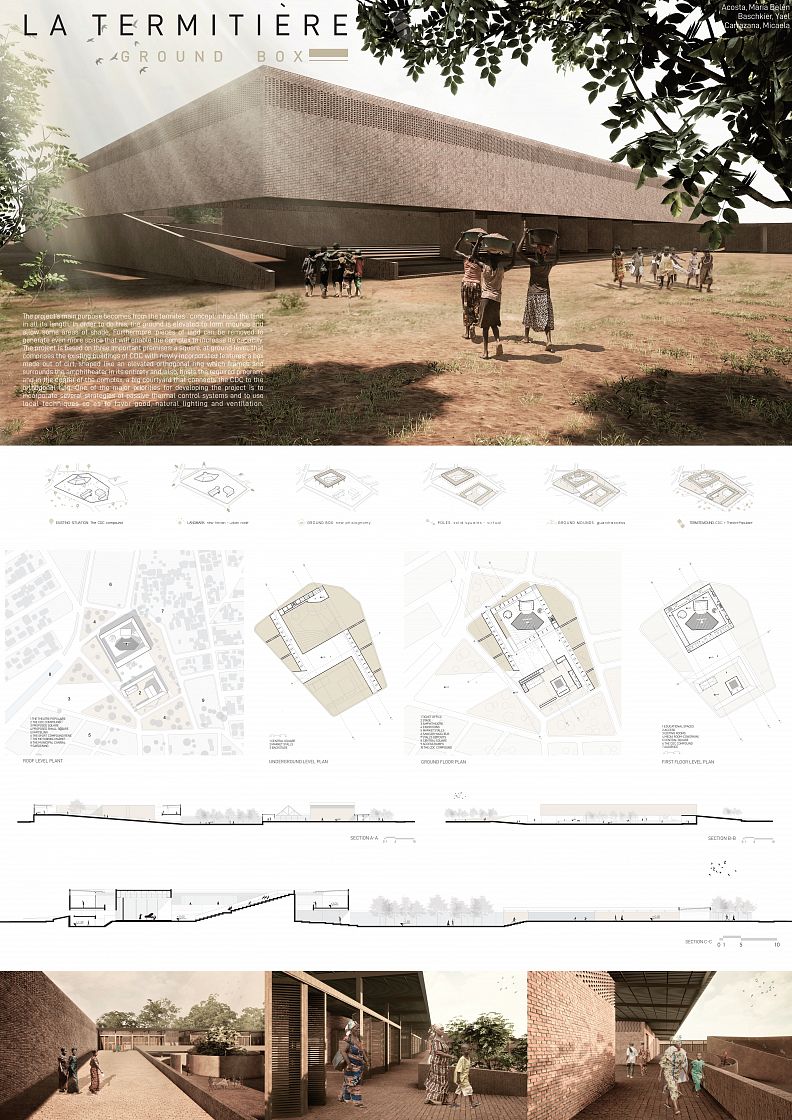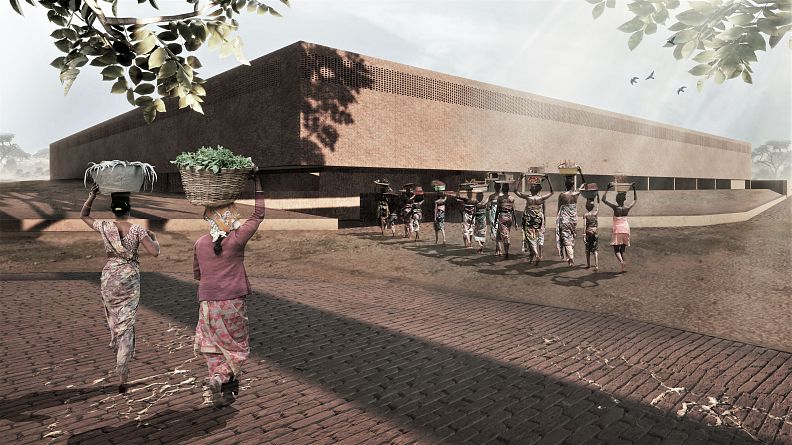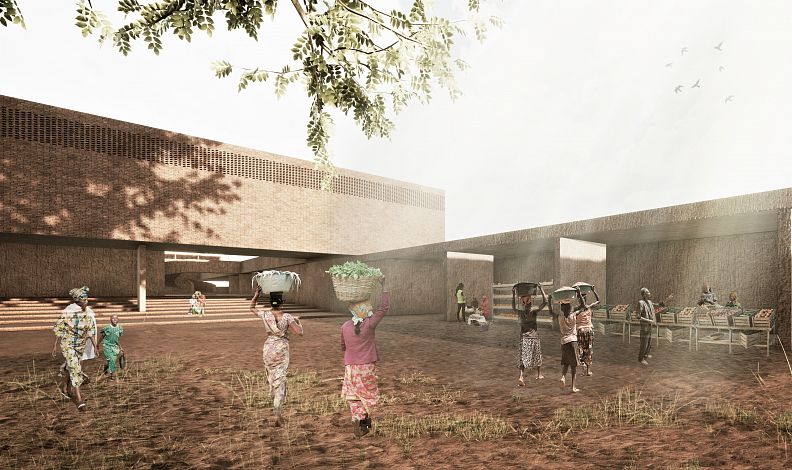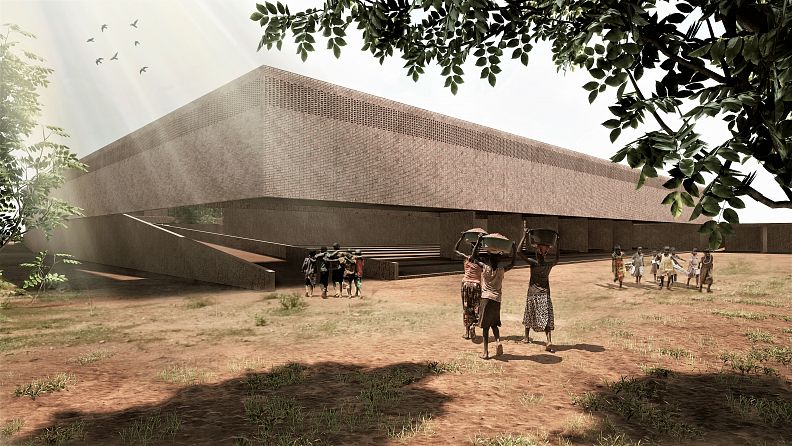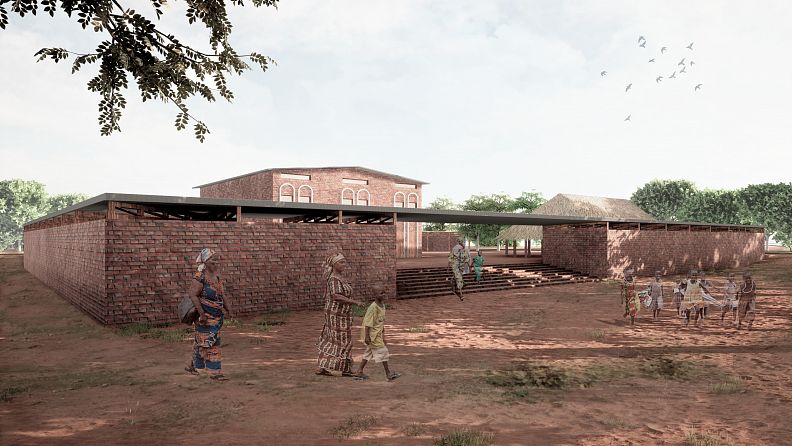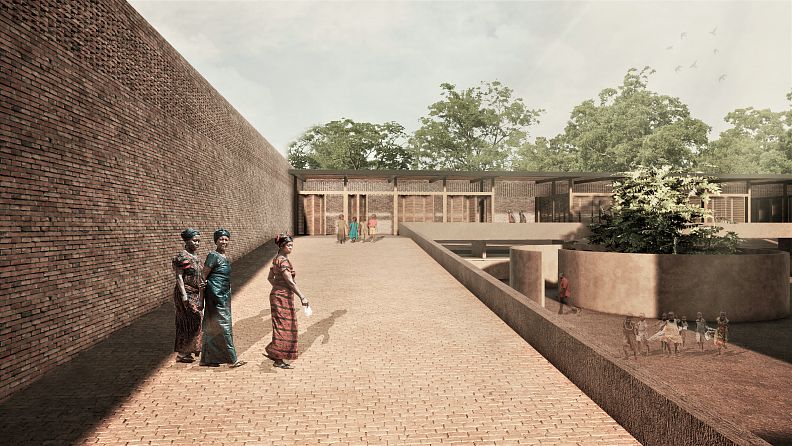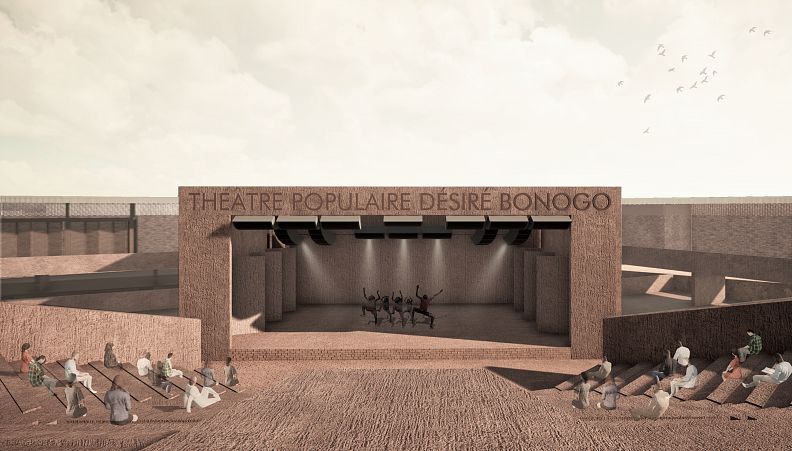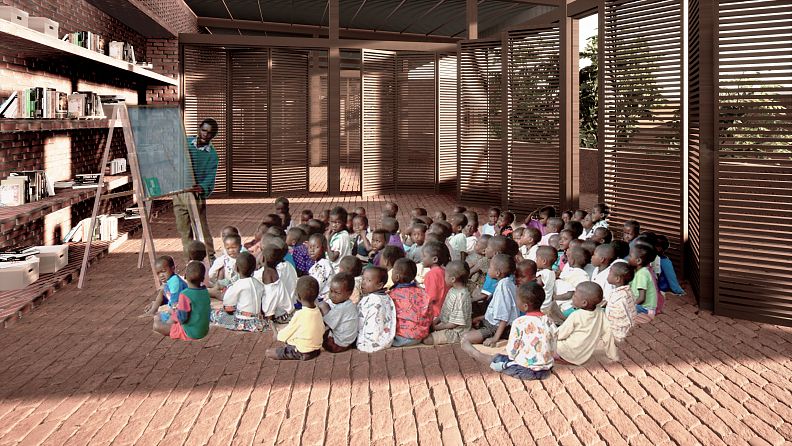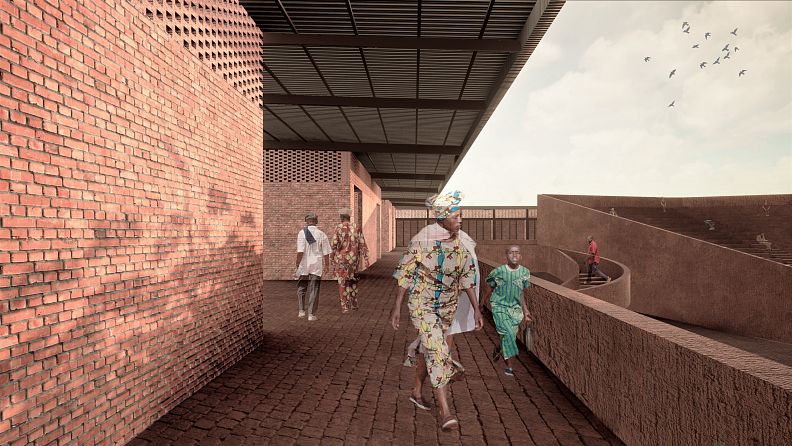The Ground Box

Project idea
The main goal of this project is to stimulate the area by developing an iconic building in the center of Samandin city, giving the existing amphitheater a new physiognomy and identity. Carrying out an architectural intervention on a building and its historic surroundings inevitably implies taking a stance on the intervention upon its cultural heritage as the impact it will have on its environment. This had to be done in a minimally invasive way. According to this, the new building is located surrounding the existing amphitheater, by creating an elevated frame.
Project description
The project’s main purpose becomes from the termites´ concept: inhabit the land in all its length. In order to do this, the ground is elevated to form mounds and allow some areas of shade. Furthermore, pieces of land can be removed to generate even more space that will enable the complex to increase its capacity. The project is based on three important premises: a square, at ground level, that comprises the existing buildings of CDC with newly incorporated features; a box made out of dirt, shaped like an elevated orthogonal ring which frames and surrounds the amphitheater in its entirety and, also, hosts the required program; and in the center of the complex, a big courtyard that connects the CDC to the orthogonal ring. One of the major priorities for developing the project is to incorporate several strategies of passive thermal control systems and to use local techniques so as to favor good, natural lighting and ventilation. The atmosphere between the box and the amphitheater turns out to be the emptiness as a multipurpose and interaction space. On the outside, it’s a closed, heavy and tectonic box; in contrast to its interior, as a flexible, light and open space. There are two different geometries coexisting: the orthogonal box, and the amphitheater twisted inside of it. In this way, the orthogonal contains and respects the twist. The box is made based on the termites´ logics: such as going from narrow to wider spaces, and the other way around; with controlled and indirect lighting; and covered by a skin that allows thermal comfort, ventilation and illumination. Applying all this concepts, the project results into an “architecture of minimals”, in the way the resources are used to create suitable atmospheres, for the requested functions, taking advantage of local materials, light and air.
Technical information
Local materials and techniques used: a box made out of CEB (compressed earth blocks), reinforced concrete structure, wood for roof structure and panels, and metallic roof.
